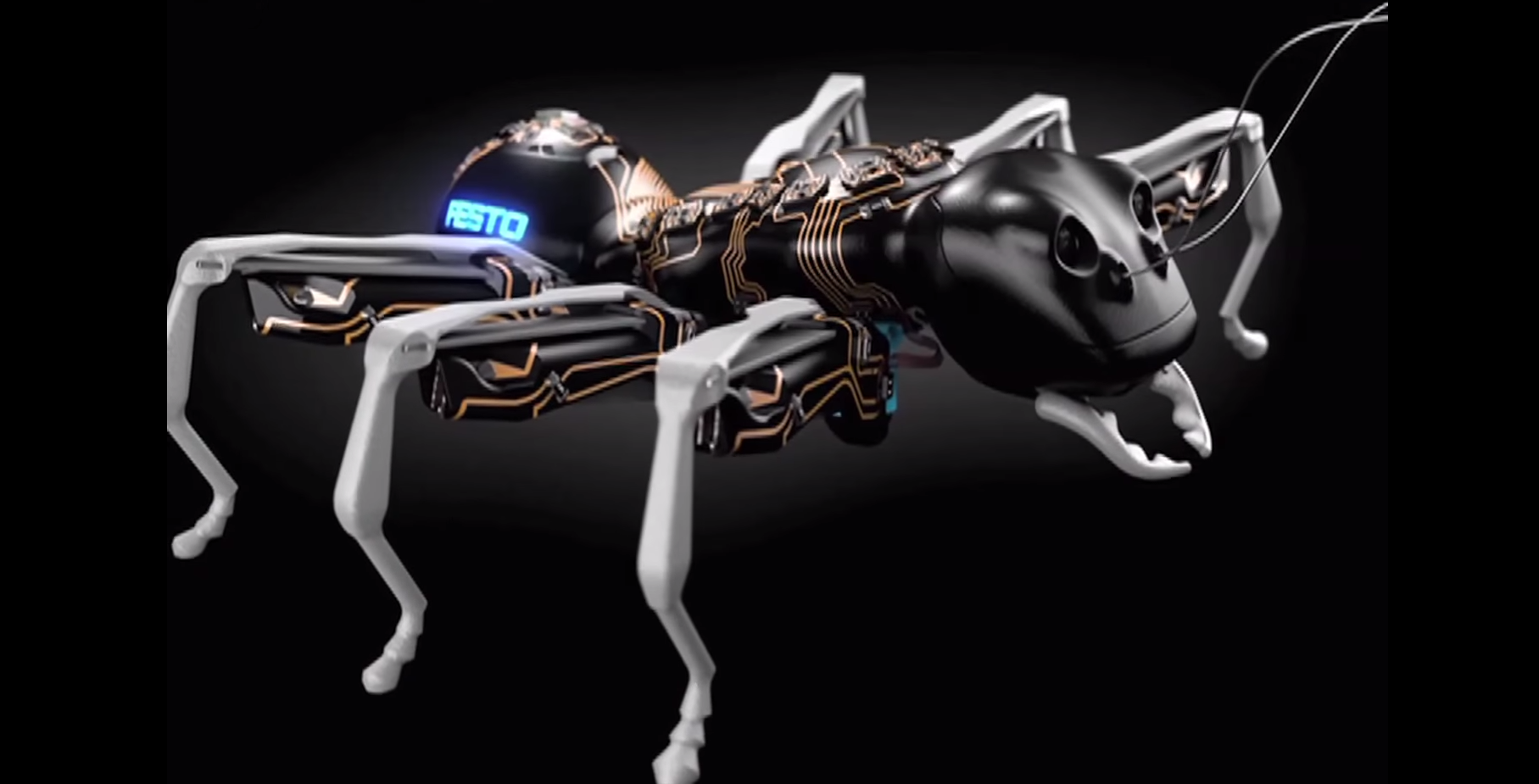
Bionic ants produced by 3D printers are set to run the factories of the future. German engineers Festo are preparing to showcase the plastic ants, which are roughly the same size as a human hand and scuttle around in a similar fashion to their natural counterparts, at the world's biggest industrial technology fair next month.
The company has also designed lightweight robot butterflies, which weigh just 32 grams and mimic the lightweight mobility of the real insects.
The robot insects are part of Festo's Bionic Learning Network, which uses natural examples as templates for designing machinery and equipment for industrial and technical uses.
The ants, called Bionic ANTs (Autonomous Networking Technologies), exhibit the same cooperative behaviour seen in real ant colonies. Each comes with a head-mounted camera and communicate with each other via a wireless network. They have six legs made from flexible ceramic actuators and pincers which allow them to pick up and transport small objects.
Each of the machines measures 13.5cm are powered by two lithium batteries, which can be charged by the ants docking their antennae against a charging station.
Festo will present the robot insects at the Hannover Messe technology fair next month. The products are used to model future industrial robot development.
The bionic butterflies have a 50cm wingspan and coordinate their flying direction through a series of infrared cameras which track the robots' movements and relay information to them through a central computer system. The butterflies could be used in a similar fashion to drones for aerial filming.
The German engineers have previously designed robotic penguins which used 3D sonar to navigate through water and a remotely-controlled bionic kangaroo with spring-loaded legs to mimic the bouncing movement of its natural counterpart.
Additive manufacturing or 3D printing is the process of making a three-dimensional object from a digital file which dictates the design of the object. Metal or plastic powder is used as the base material which is melted and cut into layers by a moving laser or electron beam. Horizontal layers of powder are continually melted and shaped until the final object takes form.
Uncommon Knowledge
Newsweek is committed to challenging conventional wisdom and finding connections in the search for common ground.
Newsweek is committed to challenging conventional wisdom and finding connections in the search for common ground.
About the writer
Conor is a staff writer for Newsweek covering Africa, with a focus on Nigeria, security and conflict.
To read how Newsweek uses AI as a newsroom tool, Click here.








